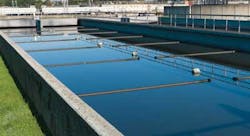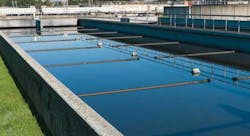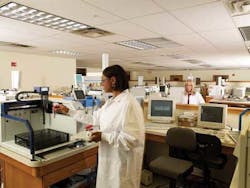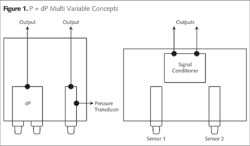By Hank Lambert
Since the establishment of the federal Safe Drinking Water Act (SDWA), the safety of the U.S. drinking water supply has been a significant priority for health officials. Under this act, the U.S. Environmental Protection Agency (EPA) collects data on contaminants that may be present in drinking water but are not currently regulated. To support this data collection effort, the EPA implemented its third Unregulated Contaminant Monitoring Rule (UCMR 3) to determine whether further regulations are in the interest of public health. This requires public water systems (PWS) to monitor for the presence of 28 additional chemicals and two viruses during a 12-month period beginning in January 2013.
The EPA's UCMR Program
Federal efforts to control contaminants in drinking water began in 1974 with the passage of the SDWA. Under the SDWA, the EPA is required to set enforceable maximum contaminant levels (MCLs). The UCMR program is designed to measure the occurrence and levels of specific contaminants found in drinking water at U.S. PWS. The data collected is stored in the National Contaminant Occurrence Database and is used to prioritize unregulated contaminants and determine whether further regulatory action is appropriate.
The UCMR program requires the EPA to issue a list every five years of no more than 30 currently unregulated contaminants to be monitored by PWS. To date, the EPA has conducted two separate rounds of UCMR drinking water monitoring. The third round, UCMR 3, was published in May 2012, and will monitor 30 new additional contaminants during the period from 2013 to 2015.
UCMR 3 Requirements
Under UCMR 3, PWS will be required to monitor a total of 30 contaminants (28 chemicals and two viruses).
Assessment Monitoring (List 1)
All PWS serving more than 10,000 people, along with 800 EPA-selected PWS serving 10,000 or fewer people, will be required to monitor 21 contaminants. The contaminants include seven volatile organic compounds, six metals, six perfluorinated compounds, one synthetic organic compound and one oxyhalide anion. Selected PWS must monitor for these contaminants continuously for any 12-month period from January 2013 through December 2015. Analysis of water samples will use technologies commonly used by laboratories that evaluate drinking water.
Screening Survey (List 2)
All PWS serving more than 100,000 people, as well as 320 EPA-selected PWS serving between 10,000 and 100,000 people and 480 selected PWS serving 100,000 or fewer people will be required to monitor seven hormones in addition to the 21 contaminants in List 1. Selected PWS must monitor for these additional contaminants continuously for any 12-month period from January 2013 through December 2015. Unlike the analysis of List 1 contaminants, the analysis of samples for List 2 contaminants will require the use of specialized technologies available only through select analytical laboratories.
Pre-Screen Testing (List 3)
The EPA will select 800 representative PWS serving 1,000 or fewer people with wells located in areas of karst or fractured bedrock, i.e., complex environments with distinctive hydrologic features, that do not disinfect drinking water. PWS identified to participate in pre-screen testing will monitor two contaminants continuously for any 12-month period from January 2013 through December 2015.
Sampling and Testing
Sampling conducted under UCMR 3 is to take place at all entry points to the distribution system of the PWS. However, PWS may perform sampling at representative entry points when groundwater is collected from multiple sources or when they receive purchased water through multiple connections from the same wholesale supplier. Representative sampling in these circumstances is subject to EPA approval.
Under the UCMR 3 program, the EPA is responsible for all costs associated with the preparation of samples and sample analysis for those PWS serving 10,000 or fewer people. In addition, the EPA will arrange for the collection of samples from those PWS selected to participate in the pre-screen testing of List 3 contaminants.
Reporting Requirements
Data generated from samples collected under UCMR 3 will be posted by analytical laboratories to the EPA's Safe Drinking Water Accession and Review System (SDWARS) and will be accessible to registered PWS through the EPA's electronic reporting system.
The Consumer Confidence Report Rule requires that PWS report monitoring results when unregulated contaminants are detected and the EPA's Public Notification Rule requires PWS to provide public access to testing results.
Choosing a Laboratory
The EPA requires that all samples be analyzed by an analytical laboratory that has obtained approval by the agency through its Laboratory Approval Program. Laboratory approval is based on the successful completion of an EPA administered proficiency test study. Approved analytical laboratories must meet quality assurance requirements to achieve and maintain approval under the UCMR 3 program.
PWS operators should consider selecting a laboratory that holds EPA approval to test for all of the contaminants that their system is required to monitor under UCMR 3.This approach will be more efficient than dealing with multiple laboratories evaluating samples to different methods and should also streamline the reporting process. For those PWS responsible for paying the cost of sampling and testing themselves, working with a single testing laboratory will also prove to be more cost-effective.
About the Author: Hank Lambert is the General Manager, Global Food and Water Businesses for UL (Underwriters Laboratories). Lambert joined UL in November 2010, bringing extensive food industry general management, supply chain management and business building experience. Underwriters Laboratories is approved by the EPA to analyze water samples collected under the UCMR 3 program for all 28 List 1 and List 2 contaminants, and is the only testing laboratory in the U.S. certified in all 50 states for drinking water analysis.






